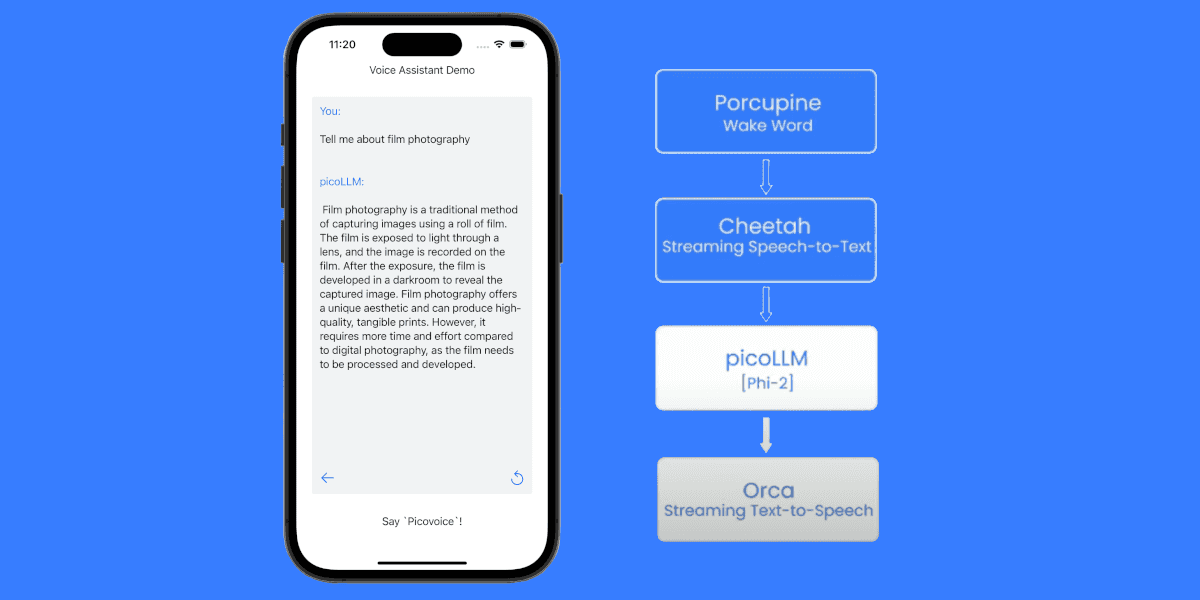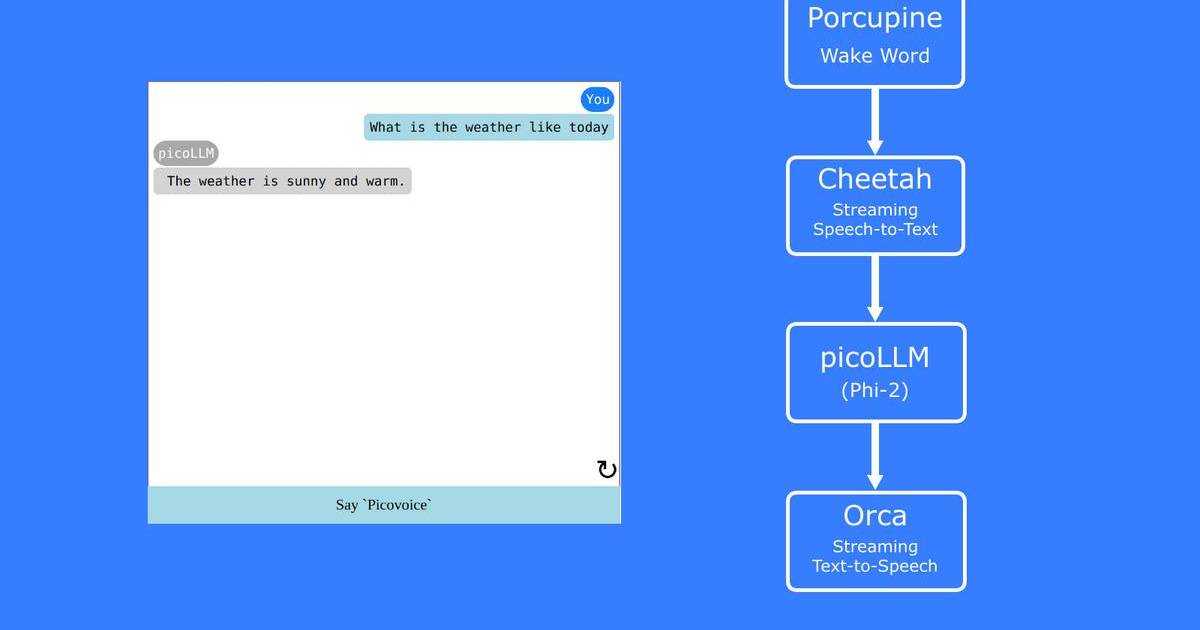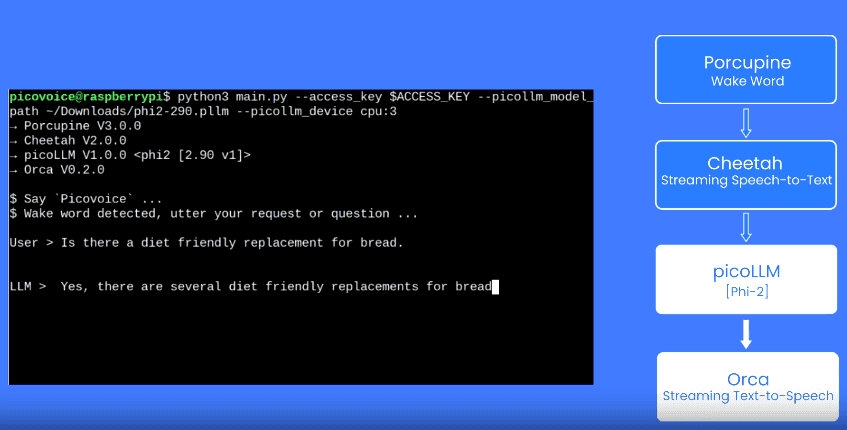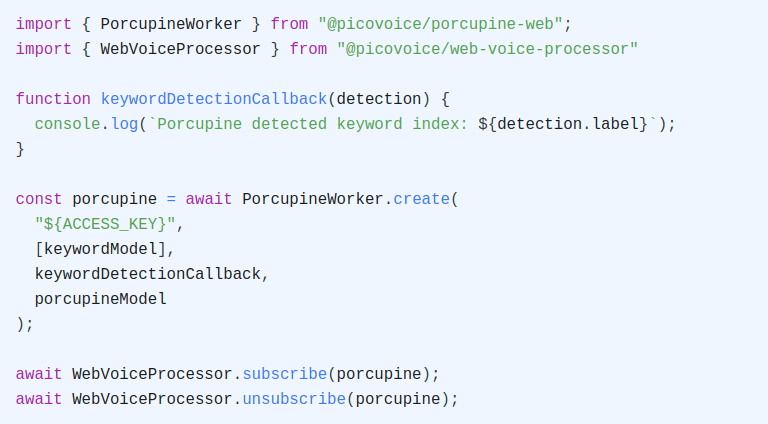From Siri to Google Assistant, mobile voice interfaces have become a standard feature in modern mobile apps: Voice commands, dictation, hands-free voice activation… Voice AI lets users interact naturally—without typing or tapping.
This complete guide walks through key speech recognition concepts, available speech recognition options supporting React Native, how to implement speech recognition in React Native, and how to build a fully on-device voice system using Picovoice.
Why on-device speech recognition matters:
- Privacy: Audio never leaves the device, ensuring HIPAA, GDPR, and CCPA compliance
- Speed: No network latency, instant processing
- Reliability: Guaranteed response time even in remote areas with poor reception
Learn more about why and when you should choose voice AI on the edge over the cloud, and facts about on-device speech recognition with cloud quality.
Understanding Speech Recognition Approaches
Speech recognition can refer to different technologies and capabilities:
Hands-free Activation with Wake Word Detection
Wake Word Detection continuously monitors audio for specific trigger phrases like "Hey Siri", activating the app only when detected. It's essential for battery-efficient, hands-free voice interfaces.
Wake Word Detection Alternatives for Developers: Picovoice Porcupine, Snowboy (legacy), custom TensorFlow Lite models…
Learn the nuances of benchmarking wake word engines and how to verify wake word benchmarks.
Voice Command Understanding with Intent Recognition
Speech-to-Intent directly infers user intent from speech without intermediate transcription. It's optimized for voice-controlled navigation, industrial voice assistants, and app shortcuts. Other Spoken Language Understanding (SLU) systems first convert speech to text using Automatic Speech Recognition and extract intent using Natural Language Understanding (NLU).
Intent Recognition Alternatives for Developers: Amazon Lex, Google Dialogflow, IBM Watson, Microsoft Bot Framework, Picovoice Rhino Speech-to-Intent…
Check the differences between conventional and modern approaches to spoken language understanding and compare voice command acceptance rates of Dialogflow, Lex, Watson, and Rhino.
Real-time Transcription with Streaming Speech-to-Text
Streaming Speech-to-Text processes audio continuously as users speak, providing immediate text output. It's ideal for voice assistants, live captioning, and real-time dictation.
Real-time Speech-to-Text Alternatives for Developers: Amazon Transcribe Streaming, Google Speech-to-Text Streaming, Azure STT Real-time, Picovoice Cheetah Streaming Speech-to-Text…
Evaluate real-time transcription engines' Word Accuracy, Punctuation Accuracy, and Word Emission Latency before choosing the right one for your application, and see our React Native Speech-to-Text tutorial.
Async Transcription with Batch Speech-to-Text
Async transcription processes complete audio recordings after the recording is completed. It's ideal for archive management, legal documentation, and audio file processing.
Async Transcription Alternatives for Developers: GCP Speech-to-Text, OpenAI Whisper, Azure Speech, Amazon Transcribe, Picovoice Leopard Speech-to-Text…
Audio Capture and Processing
Audio Processing tools capture and stream raw audio from the microphone to the speech engine as a first step of speech recognition.
Audio Processor Alternatives for Developers: react-native-audio, react-native-voice, Picovoice VoiceProcessor…
Advantages and Challenges of Building Speech Recognition in React Native
React Native is a powerful cross-platform framework built on JavaScript. It allows developers to use a single codebase to create iOS and Android apps.
Advantages:
- Cross-platform development: One codebase for iOS and Android.
- Large ecosystem: Many open-source libraries for audio, ML, and APIs.
- Rapid iteration: Hot reload and fast build cycles for experimentation.
- Native access: JavaScript can bridge directly to native SDKs.
Challenges:
- Performance: The JavaScript bridge can create latency with real-time audio.
- Permissions: Managing microphone access varies across platforms.
- Background processing: Handling always-listening features needs native service configuration and adoption of OS restrictions.
For production-grade voice apps, it's often best to use optimized native SDKs that minimize JavaScript overhead. However, it's not easy to find them.
If you've searched for React Native speech recognition solutions, you may have encountered a fragmented landscape of cloud APIs, abandoned libraries, and incomplete implementations.
The Current State of React Native Speech Recognition in 2025
Cloud-Based Speech Recognition Solutions (AWS, Google, IBM, Microsoft)
Cloud-Based Speech Recognition processes voice data in remote servers, introduces network latency (100-500ms), raises privacy concerns, and creates performance issues in remote locations with poor reception. Furthermore, most popular ones do not offer React Native support for their products, requiring additional bridge code. Amazon Transcribe, Amazon Lex, Google Speech-to-Text, Google Dialogflow, IBM Watson SDKs, Microsoft Azure Speech-to-Text, and Microsoft Bot Framework SDK are examples of speech recognition libraries with no React Native support. These platforms do not offer (publicly available) wake word detection support either.
react-native-voice
react-native-voice is a popular community library wrapping for platform-specific APIs. It's limited to platform capabilities, requires the internet for most features, and may have inconsistent behavior across iOS and Android. No custom vocabulary or wake word support.
Picovoice On-device Voice AI Platform
Picovoice is currently the only comprehensive, on-device voice AI solution with official React Native support. Offers four engines optimized for different capabilities:
- Porcupine Wake Word: Custom wake word detection
- Rhino Speech-to-Intent: Language understanding for voice command and control
- Cheetah Streaming Speech-to-Text: Real-time transcription
- Leopard Speech-to-Text: Async, batch speech-to-text transcription
This guide focuses on Picovoice on-device voice AI stack because it's the only solution that combines:
- Full
React Nativesupport (iOS & Android) - Custom wake word training in seconds
- Custom voice command and control
- Custom speech-to-text vocabulary
- Lightweight and accurate on-device voice AI stack
- Active maintenance and documentation
- Industry-leading accuracy and performance
Prerequisites
Before starting, ensure you have:
- Android (5.0+, API 21+)
- iOS (13.0+)
- React Native 0.63+
- Picovoice AccessKey
Choosing the Right Voice AI Solution for React Native Apps
Adding Wake Word Detection to React Native Apps
Best for: Hands-free activation, always-on listening, voice assistant triggers
When to use: Enable hands-free activation by detecting custom phrases like "Hey Siri". Preserves battery by only processing audio after the trigger phrase is detected.
See our complete guide on wake word detection in React Native to enable hands-free activation and add custom wake words to React Native applications.
Adding Voice Control to React Native Apps
Best for: Voice commands, voice picking, app navigation
When to use: Understand voice commands by inferring intents and intent details from user utterances. It's perfect for short, command-style interactions such as "Play jazz music" or "Set a timer for five minutes."
See React Native speech-to-intent tutorial for detailed implementation.
Adding Real-time Transcription to React Native Apps
Best for: Live transcription, agentic AI applications, real-time captioning
When to use: Need immediate transcription as users speak. Perfect for voice assistants, live captions, and real-time dictation.
See React Native speech-to-text tutorial for detailed implementation.
Adding Batch Transcription to React Native Apps
Best for: Audio file transcription, voice memos, meeting recordings
When to use: Translation of transferred audio files and pre-recorded documents.
Recording and Processing Audio in React Native
Best for: Managing streaming and frame handling to feed audio data to speech recognition engines
Building a Complete Voice Assistant

With all components in place, the full flow looks like this:
- React Native Voice Processor captures live audio
- Porcupine Wake Word listens for custom wake words, such as "Hey Siri" and/or "Hey Pico"
- Rhino Speech-to-Intent interprets the commands, such as "Text Mom"
- Cheetah Streaming Speech-to-Text transcribes utterances in real time, such as "I'm on my way."
The app executes the recognized action or displays text. This stack runs fully offline and requires no cloud connection—ideal for privacy-focused or latency-sensitive real-time applications.
React-Native Speech Recognition Production Deployment Checklist
Review this checklist before releasing a voice-enabled React Native app:
Performance
- Test on low-end iOS and Android devices
- Monitor battery usage during typical sessions
- Verify latency meets requirements
- Test with background noise
User Experience
- Show visual feedback when listening and thinking
- Provide feedback for "not understood" cases
- Include a voice command tutorial, teaching end-users what they can do
Privacy & Compliance
- Communicate on-device processing and data handling transparently in simple terms
- Implement data retention policies
- Document audio handling in privacy policy
Resource Management
- Always call
.delete()after stopping the speech recognition engine if it is no longer required - Test memory usage over extended periods
Common Speech Recognition Issues in React Native Apps and Solutions
Implementation of speech recognition systems affects the performance of engines and products. Leverage Picovoice Professional Services should you need help with integrating speech recognition into React Native applications.
Permission Denied Error
- Verify microphone permission is requested and granted
- iOS: Check that
Info.plisthas theNSMicrophoneUsageDescriptionkey - Android: Check that
AndroidManifest.xmlhas theRECORD_AUDIOtag
Poor Transcription Accuracy
- Test in a quieter environment to troubleshoot
- Create custom vocabulary for domain terms
- Implement Voice Activity Detection
High Battery Usage
- Don't use speech-to-text or cloud-based systems for wake word detection
- Use Rhino for voice commands, rather than the STT+NLU combination when possible
- Stop engines when not needed
Common React Native Speech Recognition Use Cases
Developers use React Native and Picovoice on-device voice AI stack to build:
- Voice AI agents and co-pilots
- Smart home controllers and IoT apps
- Voice-enabled accessibility tools
- Note-taking and dictation apps
- Hands-free mobile assistants
- Industrial and field applications
Resources
Documentation
- Porcupine Wake Word React Native Quick Start
- Porcupine Wake Word React Native API Documentation
- Rhino Speech-to-Intent React Native Quick Start
- Rhino Speech-to-Intent React Native API Documentation
- Cheetah Streaming Speech-to-Text React Native Quick Start
- Cheetah Streaming Speech-to-Text API Documentation
- Leopard Speech-to-Text React Native Quick Start
- Leopard Speech-to-Text API Documentation
- React Native Voice Processor Quick Start
- React Native Voice Processor API Documentation
Tutorials
- React Native Wake Word Detection Guide
- React Native Wake Word Tutorial
- React Native Speech-to-Text Tutorial
- React Native Speech-to-Intent Tutorial
Demos
- Official React Native Wake Word Demo
- Official React Native Speech-to-Intent Demo
- Official React Native Streaming Speech-to-Text Demo
- Official React Native Speech-to-Text Demo
- Official React Native Voice Processor Demo
Conclusion
Speech recognition transforms React Native apps into voice-enabled experiences. However, the lack of official React Native support, poorly developed JavaScript bridges can create latency in real-time audio processing. With Picovoice's official React Native SDKs, enterprises get access to a complete on-device voice AI platform, Porcupine for wake words, Cheetah for real-time transcription, and Rhino for voice commands without sacrificing efficiency, reliability, accuracy, and privacy. Developers can build production-ready React Native voice interfaces in under an hour.
Key takeaways:
- Choose the right speech recognition technology for your application
- On-device processing provides privacy, speed, and offline functionality
- Custom vocabulary and intents improve accuracy for your domain
- Combine engines for complete voice assistant experiences
Start building voice-enabled React Native apps with a free Picovoice account.







